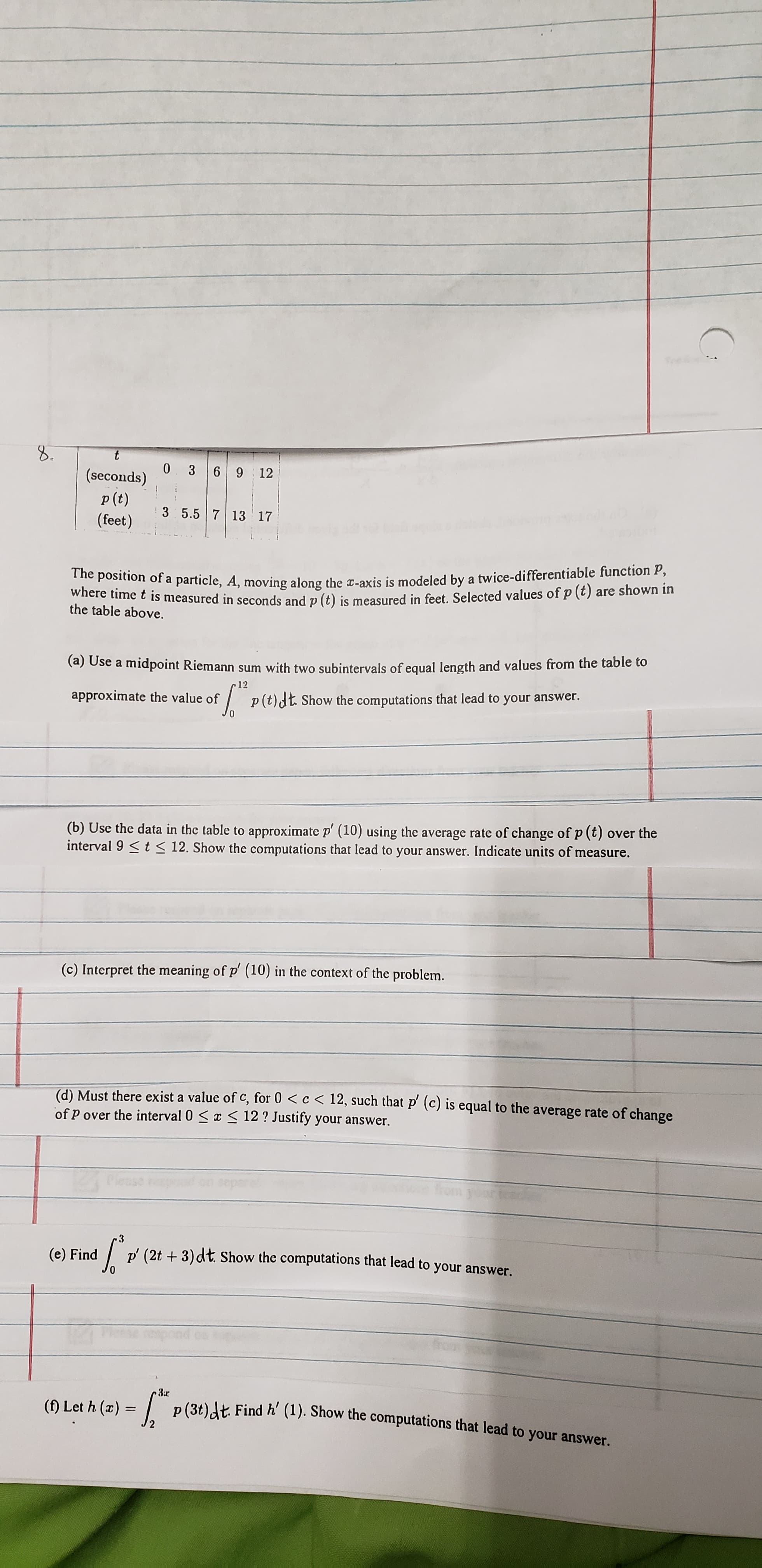3. (seconds) t 0.369 12 p(t) (feet) 3 5.5 7 13 17 whore ton of a particle, A, moving along the c-axis is modeled by a twice-differentiable function P, where time t is measured in seconds and p (t) is measured in feet. Selected values of p () are showln m the table above. (a) Use a midpoint Riemann sum with two subintervals of equal length and values from the table to 12 approximate the value of / p(t)dt Show the computations that lead to your answer. (b) Use the data in the table to approximate p' (10) using the average rate of change of p (t) over the interval 9 < t< 12. Show the computations that lead to your answer. Indicate units of measure. (c) Interpret the meaning of p' (10) in the context of the problem. (d) Must there exist a value of C, for 0
Addition Rule of Probability
It simply refers to the likelihood of an event taking place whenever the occurrence of an event is uncertain. The probability of a single event can be calculated by dividing the number of successful trials of that event by the total number of trials.
Expected Value
When a large number of trials are performed for any random variable ‘X’, the predicted result is most likely the mean of all the outcomes for the random variable and it is known as expected value also known as expectation. The expected value, also known as the expectation, is denoted by: E(X).
Probability Distributions
Understanding probability is necessary to know the probability distributions. In statistics, probability is how the uncertainty of an event is measured. This event can be anything. The most common examples include tossing a coin, rolling a die, or choosing a card. Each of these events has multiple possibilities. Every such possibility is measured with the help of probability. To be more precise, the probability is used for calculating the occurrence of events that may or may not happen. Probability does not give sure results. Unless the probability of any event is 1, the different outcomes may or may not happen in real life, regardless of how less or how more their probability is.
Basic Probability
The simple definition of probability it is a chance of the occurrence of an event. It is defined in numerical form and the probability value is between 0 to 1. The probability value 0 indicates that there is no chance of that event occurring and the probability value 1 indicates that the event will occur. Sum of the probability value must be 1. The probability value is never a negative number. If it happens, then recheck the calculation.
Need assistance with D, E and F. These are high school level questions that I am practicing on to take a CLEP test. Please give to the university level tutor that helped me with some of the other problems in this question. This image is clear and you have all the information.

Trending now
This is a popular solution!
Step by step
Solved in 3 steps


